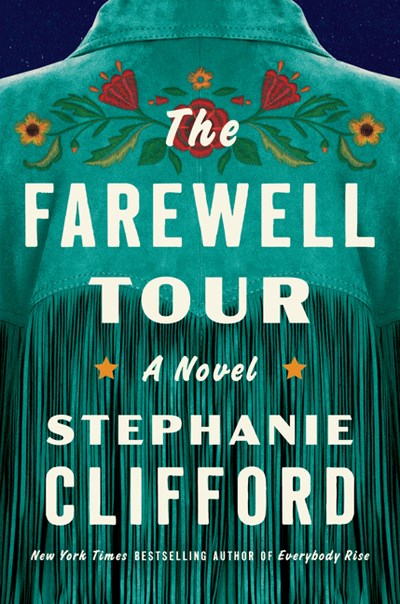Stephanie Clifford’s second novel, The Farewell Tour, is both a dual-timeline redemption story and an epic journey through a half-century of country music.
At 57, country music star Lillian Waters—or Water Lil, as she’s known to her fans—is drinking too much and feeling her age, and she’s unable to write any new songs. Even worse, she keeps alienating almost everyone in her life. In short, Lillian’s washed up. When a doctor gives her more bad news—her voice is deteriorating due to polyps—she decides to hit the road one last time for a farewell summer tour.
Lillian’s manager, Stanley, puts together a ragtag band of backup musicians and books some county fairs, but the tour gets off to a comically bad start. To try to salvage it, Lillian calls on her old friend Charlie Hagerty, a session musician and songwriter, and he agrees to join.
The Farewell Tour alternates between the summer of 1980 (the novel’s present) and a retrospective sweep of Lillian’s life as told by the woman herself, beginning with her Depression-era childhood on a subsistence farm. Like real-life midcentury country legends Loretta Lynn and Tammy Wynette, Lillian overcomes a hardscrabble background and abusive early years, though she’s the daughter of Swedish immigrant farmers in Washington rather than from Appalachia or the Deep South. Obsessed with the country music that she first hears as a girl, Lillian sets out to beat the long odds, learning to play the guitar, writing her own songs and performing on radio stations. Over and over, she faces sexism and misogyny in her quest to make it big. But at the center of this epic story is a quiet mystery, a childhood episode that Lillian can’t quite let herself remember.
Full of marvelous period details about World War II-era Tacoma, Washington, and its proto-country music scene, as well as glitzy 1970s Nashville, Tennessee, The Farewell Tour covers a huge amount of ground, with a correspondingly large number of supporting characters, a sometimes dizzying array. Music fans will appreciate the references to real 20th-century country stars and industry players. Lillian herself is an appealing mix: determined and hard charging, blustery and often unable to get out of her own way. Like a country ballad, The Farewell Tour offers a bittersweet testament to the healing power of old love, long friendships and heartfelt songs.



















